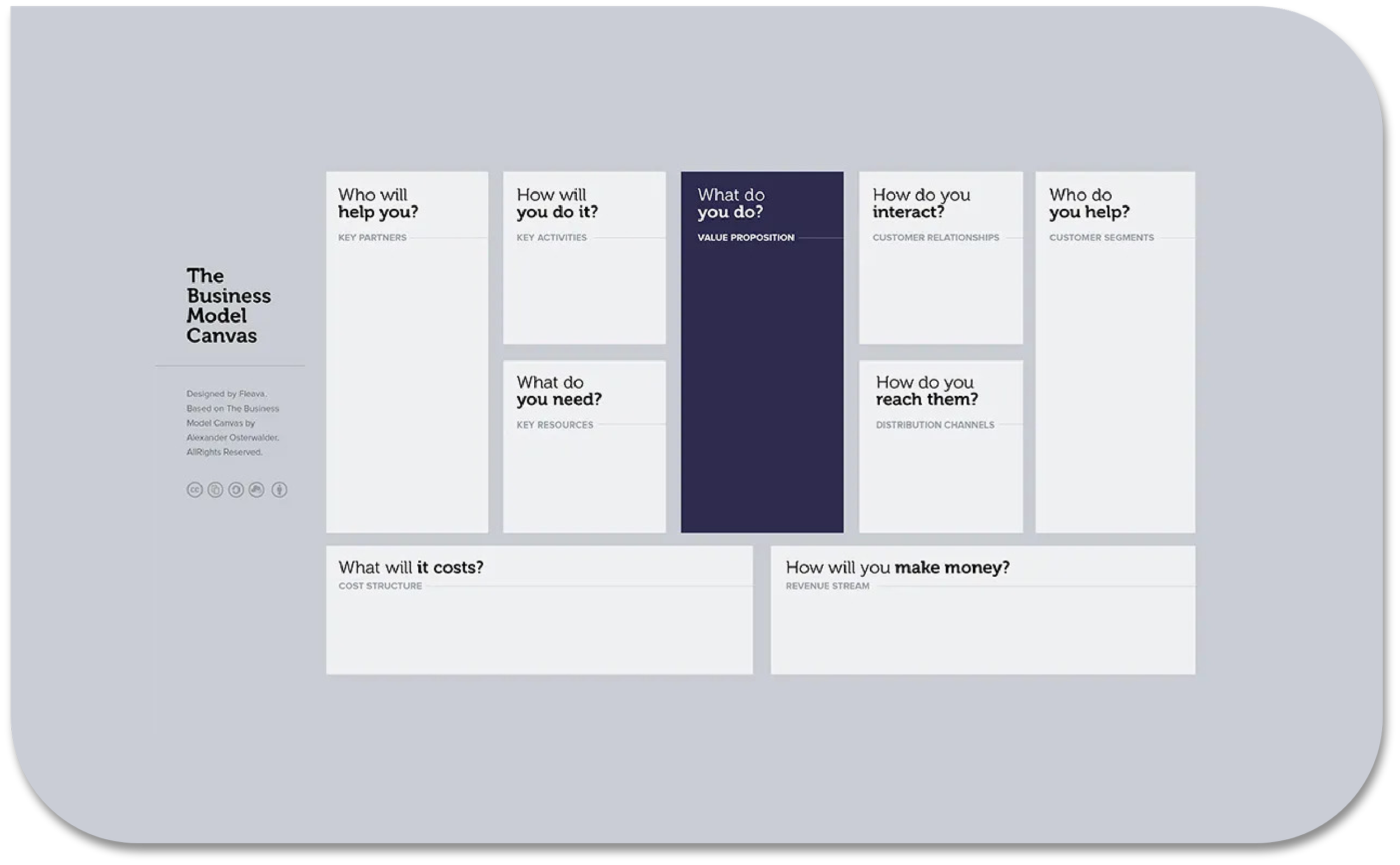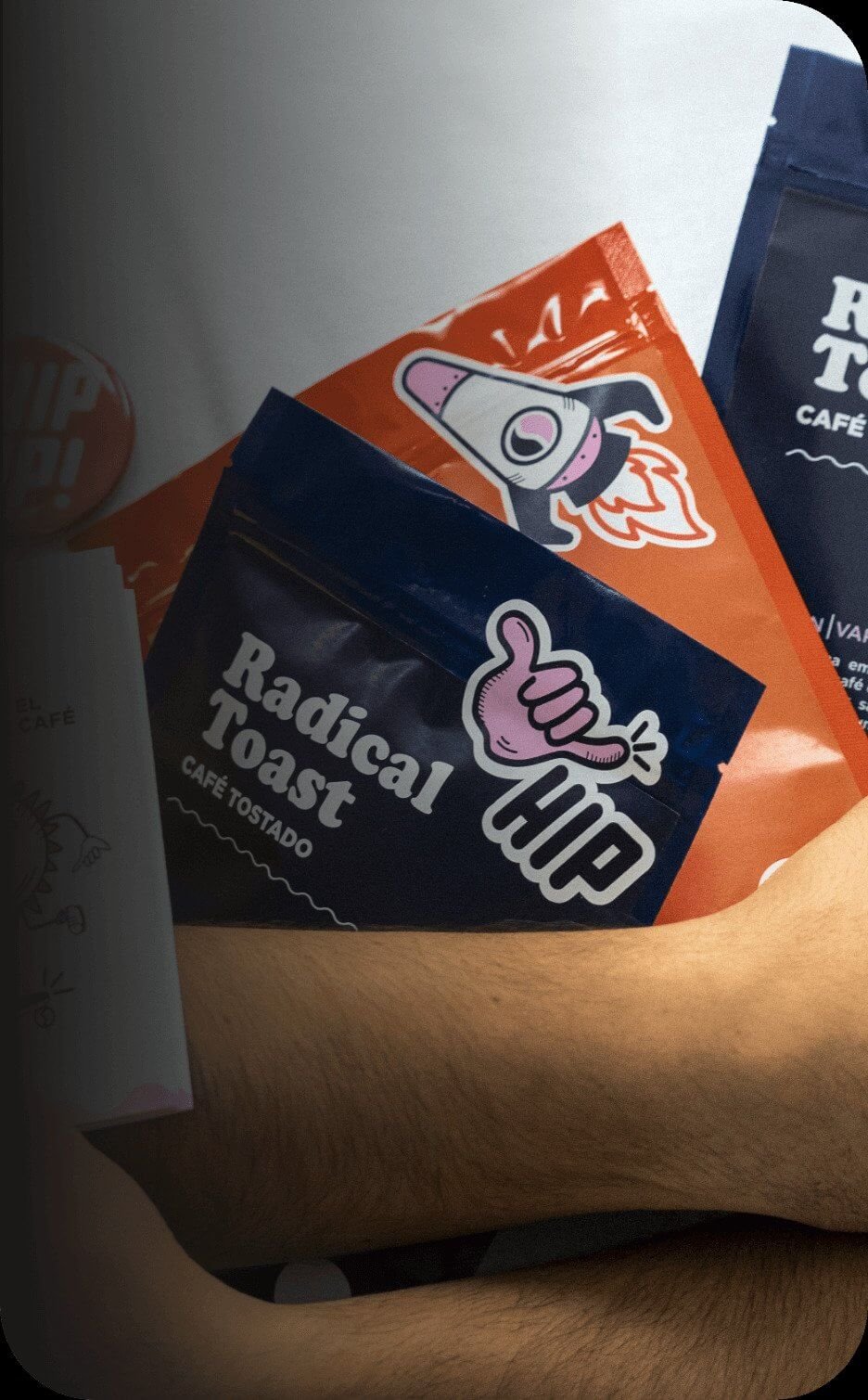Blog / Insight: Business
All about the Business Model Canvas
October 14, 2022
Reading Time: 8 minutes
The Business Model Canvas was proposed by Alexander Osterwalder based on his earlier book: Business Model Ontology. It outlines several prescriptions which form the building blocks for the activities. It enables both new and existing businesses to focus on operational as well as strategic management and marketing plan.
“The Business Model Canvas, is a strategic management and entrepreneurial tool. It allows you to describe, design, challenge, invent, and pivot your business model.” – Businessmodelgeneration

Business Model Canvas preview
It’s a simple graphical template describing nine essential components: Customer segments, value propositions, channels, customer relationships (such as self service or personal assistance), revenue streams, resources, activities, partnerships, and costs. Let’s dive deeper to each segment of the canvas to understand it more.
Step 1: Customer Segments
Let’s start with the customer segments, located in the table's top-right column. It’s basically determining the customers, for whom are you creating value. Who are your most important customers? What’s the market segment, i.e. Mass Market, Niche Market, Segmented, Diversified or Multi-sided Platform? The output of this step should be a list of Personas, organized by Customer Segment if you have more than one segment.
To determine your customers, obviously, you are trying to solve their problems with your service/product. So upon deciding who your customers will be, first, you need to make sure that you can identify an existing need/problem and identify specific alternatives that your customer uses today. If you’re not sure, go out and observe, and talk to some representative people. A startup’s most common problem is trying to solve a problem that doesn’t exist.
Step 2: Value Propositions
This is the most important step. This is all about your product/service, and what you offer to those customers. Which of the Problems or Needs that you identified in your Personas are you fulfilling? What is unique about your Value Propositions and why does your customer prefer them to their Current Alternatives?
You may feel like you’re in good shape on understanding the customer’s world but you don’t have any validation on whether the Value Propositions are clicking because this is a new venture. That’s OK, this is your canvas, it may be full of assumptions initially, but at the later stage, you will have to make sure that you validate your value propositions.
Step 3: Distribution Channels
A distribution channel is a way to communicate your proposition to your segments of customers. Or in short – how you distribute your product/service. For example, if you sell shoes for women and there’s an e-commerce website where local brands can sell their products, that site is a sales Channel. If you advertise your products in magazines, that’s an advertising channel. And so on.
But it doesn’t end there. This section is where you will intensively determine which channels work best. How much they cost and how they can be integrated into your and your customers’ routines. This is a way for you to make sure you communicate your product to your customers in the most effective ways, only.
Step 4: Customer Relationships
What type of relationship does each of our Customer Segments expect you to stablish and maintain with them? Which ones have you established? How are they integrated with the rest of your business model? How costly are they? These will be a list of ways on how you maintain your relationship with your customers, stuff like personal assistance, Dedicated Personal Assistance, Self-Service system, Automated Services, Communities development, and so on.


Featured
Your Guide to Branding and Why it Matters
October 14, 2022


Featured
Your Guide to Branding and Why it Matters
October 14, 2022























